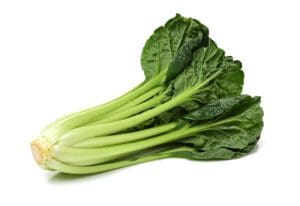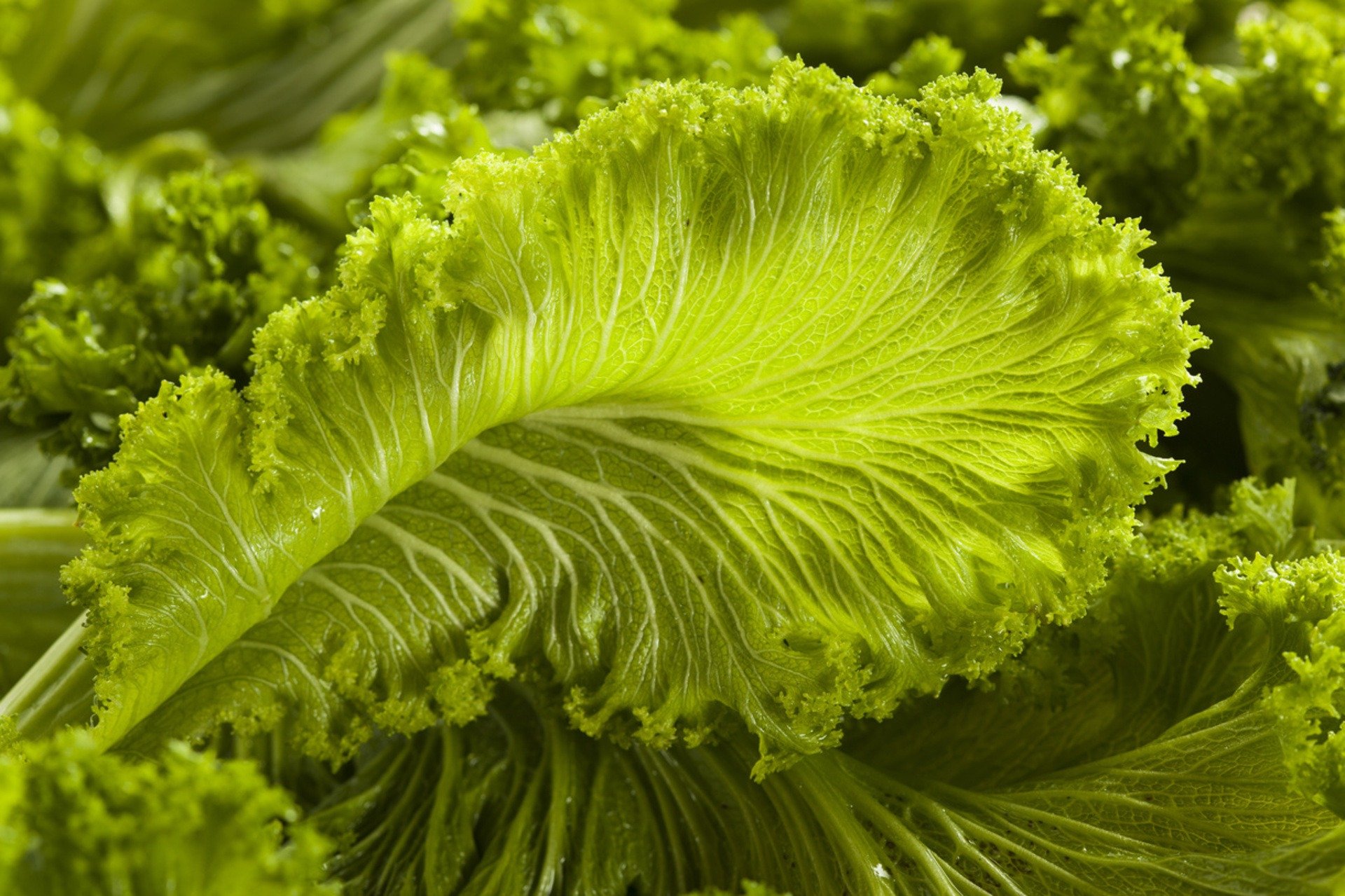Get to Know These 9 Types of Mustard Greens
There are certain star players in the greens game: Era-defining it-girls like arugula, kale and radicchio; culinary staples like spinach, cabbage, collard greens and chard; iceberg, romaine and other sandwich-standby lettuces.
But there’s a wide world of leafy vegetables out there — and we can think of at least one varied, versatile category that deserves to be a kitchen go-to. Its seeds have been used for millennia and remain, by volume, the most-traded spice in the world, destined to be pressed into oil, ground into paste, or fried, pickled or powdered. It only makes sense that the mature plant would bring the flavor, too.
Behold: the endless possibilities of mustard greens.
Mustard greens are nothing new, to be sure. Many in the U.S. will know them as a fixture of soul food and the broader Southern cuisine shaped by the innovations of enslaved Africans. In 2020’s “Vegetable Kingdom,” chef and author Bryant Terry notes “how central mustard greens are to African American cuisine,” a slow-braised side (like collards or turnip greens) rounding out many a Sunday table. (Here’s a South African-inflected recipe from Terry’s previous cookbook, “Afro Vegan.”) Mustard greens are also popular across Asia, where they star in diverse dishes from gat-kimchi to sarson ka saag.
Southern Giant is probably the most common variety in U.S. grocery stores, and you may also see East Asian varieties like mizuna and tatsoi. But there are actually dozens of types of mustard greens, many of which are cultivars of familiar species like Brassica juncea (brown mustard, also known as Chinese or Indian mustard) or Brassica rapa (sometimes called “field mustard”). All are united by a distinctive flavor profile that can stand on its own or add interest to salads, stir-fries, braises and more.
“I think mustard greens are a little powerhouse,” says Jenn Louis, chef and author of 2017’s “The Book of Greens.” And there’s almost no limit to how you can use them. “The young leaves are really nice in a salad to give some dimension,” Louis explains, as in a recipe from her cookbook that mixes in gouda, apple (or pear) and cashews. “I also love how you can fold them into something that you cook at the very end. The greens wilt quickly and add that punch of flavor.”
Home gardeners will find that mustard greens are reliably low-maintenance and high-reward. “They are easy to grow and often thrive in even challenging soil types,” explains farmer Darby Weaver, brand strategist and lead writer at High Mowing Organic Seeds. And the leaves aren’t the only thing worth harvesting: “When they do go to flower towards the end of their development, the flowers are edible and equally as spicy.”
The peak season for mustard greens is late spring and early summer — meaning they’ll be popping up in farmers’ markets and home gardens right about now. Below, our rundown of some common mustard green varieties, what makes them special and what you can do with them.
Southern Giant Curled
This large-growing variety is very popular among home gardeners for its cold resistance and reliably big yields. It’s considered the standard mustard green of the Southern U.S. and a staple of the Black culinary tradition, typically braised with onion and ham hock or other smoked meats.

Photo by boonchuay1970/Adobe Stock.
Green Wave
Similar in appearance to Southern Giant Curled mustard but sharper and spicier in flavor, Green Wave is also hardy, well-adapted to U.S. climates and suitable for a fall harvest. It’s often collected early as microgreens; the leaves of the mature plant have more bite and become milder when cooked.
Mizuna
Closely related to turnips and napa cabbage, this mustard green is known for its use in Japanese cuisine. (In fact, certain heirloom varieties in Japan are protected by the government.) Mizuna comes in many forms of varying widths, lengths and colors, but generally has lacy leaves and a mild, peppery flavor. Try it as a quick pickle or garnish for soups and stews.
Ruby Streaks
Similar in appearance to mizuna but a different species entirely, Ruby Streaks are slender, lacy and visually appealing. Weaver notes that this variety is among High Mowing’s best-selling mustards, and is “very popular among commercial growers for its high and reliable productivity and great flavor,” which is sweet and slightly pungent.

Photo by June-Marigold/.Adobe Stock.
Garnet Giant
This broadleaf variety is one of the darkest-colored mustard greens you’ll see, with wide, subtly scalloped leaves in an attractive deep maroon. Garnet Giant mustard can grow very large, but the beautiful color comes in early, and the greens are often harvested in the baby stage for a subtler flavor.
Japanese Giant Red
Another larger variety with wavy leaves and crunchy stems, Japanese Giant Red mustard has a distinctive taste that some liken to horseradish (also a member of the Brassicaceae family) or even garlic. Because of its pungency and sturdiness, it’s favored for stir-frying or boiling.
Golden Frill
As the name suggests, this bright-green mustard variety can be very frilly — sometimes almost resembling frisée. The flavor is spicy and a little sweet, great for adding texture and zip to salads. A bonus: some farmers have noted that this variety will occasionally produce a crisp, turnip-like root that can be used on its own.

Tatsoi
Tatsoi, common in Chinese cuisine and similar in texture and taste to bok choy, is also known as “spoon mustard” (a reference to its rounded, scoop-like leaves). Its flavor has been described as mild, nutty, sweet and even buttery; in 2020, Food52 declared it “the new spinach,” and it can be used much in the same way. At the farmers’ market, you’ll sometimes find it in whole intact heads.
Wasabina
You guessed it — these frilly, tender, lime-bright greens are “packed with wasabi flavor,” says Weaver, with a lightly sinus-clearing kick. This cold-tolerant variety “does well in early spring and as a late fall planting.” Harvest early or look for baby leaves at the farmers’ market to ensure it’s mild enough to eat raw; the mature leaves are generally cooked or processed before eating, in stir-fries, stews, braises or pickles.
Get the latest food news, from FoodPrint.
By subscribing to communications from FoodPrint, you are agreeing to receive emails from us. We promise not to email you too often or sell your information.
Top photo by Hussain/Adobe Stock.
More Reading
15+ ideas for delicious meatless grilling
July 1, 2025
4 Tips for Stretching Your Food Dollars
April 16, 2025
How to use extra onions
April 9, 2025
Our latest podcast episode on pistachios: The making of a food trend
April 1, 2025
This vegan tiramisu will bring you joy
March 11, 2025
For lessons in thrifty, climate-friendly cooking, look to vintage cookbooks
March 10, 2025
Americans love olive oil. Why doesn't the U.S. produce more of it?
February 28, 2025
How to fight household food waste? Join our Eat Down Your Pantry Challenge!
February 13, 2025
During a period of egg chaos, egg replacements for (almost) any situation
February 7, 2025
Ways to go meatless — or less-meat — in January
January 15, 2025

